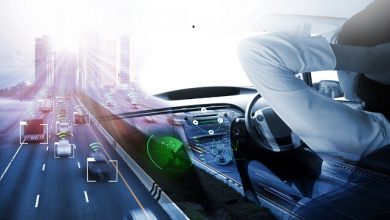Four Predictions for Autonomous Mobility in 2023

Autonomous Mobility is rapidly gaining momentum globally. Accelerated advancements in technologies such as Artificial Intelligence, machine learning, computer vision, and robotics have in turn made it possible to accelerate the development and advancement of autonomous mobility. These technologies have enabled autonomous vehicles to become more reliable and capable of navigating complex environments with greater accuracy than ever before. The future of autonomous technology, as we know it, will revolutionize transportation by offering convenience, safety, and cost-effectiveness.
Global economic pressures are also impacting the development of autonomous vehicle technology, as more countries are investing in the research and development of this new frontier. The total global investment in autonomous vehicle (AV) technology exceeds $200 billion already, and that figure is set to increase rapidly as competition increases. In India, Minus Zero Technologies is working on a ground-breaking project to create fully autonomous automobiles. It is India’s first startup that is building fully autonomous vehicles. The company’s vehicles are able to function more effectively and safely than conventional cars because of the implementation of technologies like machine learning and computer vision. The potential effects of driverless vehicles are enormous, and Minus Zero is leading the way in India in this disruptive trend.
The potential of autonomous mobility technology is being explored in a variety of industries, from transportation and logistics to healthcare and agriculture. As of 2023, AV technology is growing rapidly and shows no signs of slowing down. What else can we expect for the latter half of 2023?
The focus might shift from developing Level 5 (L5) autonomous vehicles to making production of Level 4 AV a reality (L4)
Autonomous vehicles have generated curiosity and an interesting topic of discussion among everyone. One major area of focus for researchers and engineers in autonomous vehicles is the development of L4 and L5 technology. These classifications refer to the level of autonomy a vehicle has, with L4 being able to operate without driver input in most situations whereas L5 being fully autonomous in all scenarios.
Autonomous mobility has made tremendous progress in the past few years. However, Level 5 autonomy, which is the highest level of autonomy where a vehicle can operate without any human input or intervention, is still a long way away. Significant progress has been made with regards to aspects such as the sensor technology, artificial intelligence, and machine learning needed for navigating and maneuvering. But establishing the infrastructure and environment needed for the vehicles to drive safely is still an issue that needs to be addressed in order for this technology to be fully implemented.
L5 Technology requires an immense amount of data to be collected and analysed in order to create reliable algorithms that can safely drive a car without any human assistance. This data must come from real-world testing and simulations that are too complex for current AI systems. Level 4 autonomous vehicles are already in production in limited cases and are expected to become more widely available in the coming years. This technology is a major leap forward for the automotive industry and for those who use their cars on a daily basis. In the past year, advancements in L4 autonomous vehicle innovation have taken the automotive industry by storm. Now with L4 Autonomous vehicles are equipped with AI-driven sensors, cameras, and radars that detect and respond to the environment. This technology has great potential to improve safety and reduce traffic accidents caused by human error.
Difference between L4 and L5 autonomous vehicles
| Level 4 autonomous vehicles | Level 5 autonomous vehicles |
| L4 autonomous vehicles are considered semi-autonomous. | L5 autonomous vehicles are considered fully autonomous with more advanced technology. |
| In some circumstances, L4 vehicles require little to no driver involvement. | L5 vehicles do not require any driver intervention. |
| Example: Oxa which is an European company, has their own vehicle which runs on L4 technology. | Example: Chinese company Baidu has introduced their first L5 autonomous vehicle. |
Accelerated growth in non-automotive aspects of autonomous mobility
The Growth of autonomous mobility is no longer limited to the automotive sector. In recent years, there has been an acceleration of development in the non-automotive aspects of autonomous mobility as well. This includes a range of products and services for consumers, such as self-driving delivery services, Drones and autonomous ride-sharing apps.
The Drone industry is experiencing rapid growth due to the increasing demand for autonomous mobility solutions. Autonomous Drones are being used to deliver goods, provide surveillance services, and even inspect infrastructure from a distance. This has also opened up new opportunities for businesses to reduce costs and increase efficiency while providing consumers with more convenient services. The market for autonomous drones is anticipated to reach US$ 15,634.7 million in 2023 and grow at a promising 19.3% CAGR between 2023 and 2033.
Similarly, Robotics Autonomous Mobility has become more popular after technology in the transportation industry. Just like humans, autonomous robots are capable of making their own decisions and acting accordingly. In 2019 Amazon launched its delivery Robot called ‘Amazon Scout.’ This small robot is designed to safely deliver packages to customers’ doorsteps, using advanced technology to navigate sidewalks and avoid obstacles. The market for autonomous mobile robots was valued at USD 2.97 billion in 2022, and from 2023 to 2030, it is anticipated to grow at a CAGR of 15.5%. In Southern California, packages are now being delivered by Autonomous robots from Amazon.
New transportation autonomous vehicles refer to autonomous vehicles that are designed to operate as part of a larger transportation network, such as ride-sharing services, public transportation, or delivery services. These vehicles typically operate in urban environments and are optimized for efficiency, safety, and affordability.
Some of the key technology differences between new transportation autonomous vehicles and traditional autonomous vehicles include:
- Connectivity: New transportation autonomous vehicles are typically equipped with advanced connectivity features that allow them to communicate with other vehicles and infrastructure, such as traffic lights and road sensors. This connectivity enables them to operate more efficiently and safely in dense urban environments.
- Advanced sensors: New transportation autonomous vehicles often use advanced sensors, such as radar to detect and avoid obstacles and other vehicles on the road. These sensors are typically more sophisticated than those used in traditional autonomous vehicles, which depends on cameras and GPS.
- Artificial intelligence: New transportation autonomous vehicles often use more advanced artificial intelligence systems to navigate roads and make decisions in real time. These AI systems are typically trained on large amounts of data and can adapt to changing road conditions and traffic patterns.
Overall, the new autonomous vehicles are more complex and advanced than traditional ones, with a wider variety of vehicle types, more advanced navigation and control systems, and a stronger focus on the user experience.
Investment in autonomous mobility will continue despite economic headwinds
Investment in autonomous mobility is likely to continue in the future despite the increase or decrease in the economy. This is because lower operating costs, higher levels of safety, and better environmental performance could all have long-term economic advantages. The need for research and development has increased significantly with the advancement of audio-visual technology. In order to seize the new opportunities that arise, both private businesses and governmental organizations have been funding AV technology.
Autonomous vehicles are quickly becoming the future of automotive transportation. Even if the technology is still in its early stage of development, advancements in research, and implementation are only increasing day by day. The global autonomous cars market size will grow from $931.34 billion in 2022 to $1,047.13 billion in 2023 at a compound annual growth rate (CAGR) of 12.4% This is because Large and as well as small companies are investing heavily in the research and development of self-driving cars and thus the technology is becoming increasingly popular with consumers.
Many businesses and companies from all around the world have made significant investments in autonomous vehicle technology. Waymo who launched its first publicly accessible self-driving ride-hailing service, has already raised more than $750 million for their more autonomous vehicles in the future. In January 2021, Microsoft invested in GM-owned Cruise, which focuses on robotaxis, in a deal that valued the company at $30 billion,
Advancements in ADAS technology will continue to drive innovation across the sector.
Autonomous driving assistance systems have made significant strides all across the world. Over the past decade, these systems have transformed from luxury items to crucial components of automobiles. ADAS technologies are constantly developing along with the automotive industry. These innovations have made it possible for autonomous vehicles to become more intelligent and effective. The possibility of using advanced driver-assistance systems (ADAS) to quicken the development of level 3 and level 4 automated vehicles is becoming more and more realistic as technology advances. ADAS can enable vehicles to recognise and react to road conditions, such as recognising and reacting to traffic signals and other cars. Autonomy can advance more swiftly and safely by utilising ADAS in automobiles.
Nearly all vehicles on the road are expected to have ADAS technology by 2023, ranging from basic cruise control to lane keeping systems and even semi-autonomous features. Automakers are rapidly investing in ADAS development and are actively working to create new technologies to make driving safer and more efficient for consumers. Radar, ultrasonic, cameras, infrared, and various actuators are among the sensors that make up the majority of ADAS safety features. As the technology continues to evolve and become more affordable, this technology will become an essential part of the driving experience. The advancement of ADAS technology in 2023 is likely to have a major impact on the automotive industry, providing drivers with greater safety, improved convenience, and enhanced performance.
According to a report, the ADAS market was valued at $20.72 billion in 2021 and is expected to grow at a CAGR of 14.2% through 2030, reaching USD 74.57 billion. ADAS is a critical indicator of future growth across the autonomous sector. A lot of companies like Honda,Toyota, and Nissan have already started researching and investing in ADAS Technologies. This is majorly because ADAS has the potential to improve safety by reducing the number of car accidents that occur from human error.
Autonomous Mobility is growing faster than we think, 2023 might just be the game changer for this industry. Highly automated vehicles can be useful for solving several transport problems such as drones for reaching remote geographies, empowering persons with disabilities to be independent, automate manufacturing and logistics and generally enable growing cities with safe and effortless commute options. Thus, governments and technology experts are especially seeking ways to build a better research and innovation opportunities to make autonomous technology accessible for businesses and public, alike.
About the Author
Siddhartha Bal is the Director of Autonomous Mobility at iMerit, the industry leader in data
solutions for machine learning and artificial intelligence. His team has annotated over 100
million images for computer vision projects and is considered expert in developing unique
solutions for solving some of the most complex use cases in the industry. He works with
clients to create an end-to-end solution, ensuring projects run with operational efficiency
and produce the high-quality data required.


